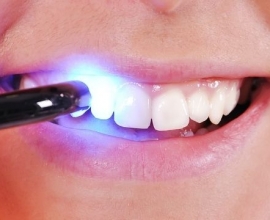
Tooth-Colored Fillings and What They Are About
We all experienced cavities as kids because we had not yet mastered the challenging tasks of cleaning and flossing properly (plus, there were all those sweets we craved). In a National Health and Nutrition Examination Survey, 42% of Americans ages 2-11 had tooth decay.
But it’s actually worse for adults: 91% of those 20-64 had “dental caries” (as they are technically known). Americans of any age are apparently not very good at resisting the sugars that are in all kinds of unexpected places and help feed dental bacteria. Some 175 million dental fillings are used to replace the decayed areas in all ages each year. That makes cavities the most common of all diseases except the even more common cold.
The statistics also mean few are effective at the basics of brushing for two full minutes, being careful to get to every side of all the teeth, after breakfast and dinner. Flossing only needs to be done before the last snack at night, but it is tempting to rush through it when we’re tired and eager to get to sleep.
If you have a full dental examination the recommended two times a year, CITIDental Brookline can catch cavities when they are just starting to develop, before they become painful or grow so large that they require the extraction of an infected tooth.
The good news is that today we have a way to fill cavities, but a more aesthetic solution than the traditional silver fillings: tooth-colored composite resin can be made to match the shade of your teeth, so that you can laugh and not be embarrassed by flashing all that silver.
There are other advantages, starting with the fact that resin does not have any of the mercury that the old silver ones did (while a small amount, many would prefer to have zero to be prudent).
The treatment is also quick and painless (after a local anesthetic injection that feels like a pinprick). It takes no more than an hour to remove the decay and fill one or two cavities, then harden the resin with a special light.
Also, because resin bonds to a tooth’s natural chemical structure, it is very durable. If you take good care (including having a dental hygienist do a professional cleaning twice a year), a resin filling could last 10 years or more.
Finally, composite resin can replace a cavity (or a chipped or cracked area) without making the tooth more sensitive.








